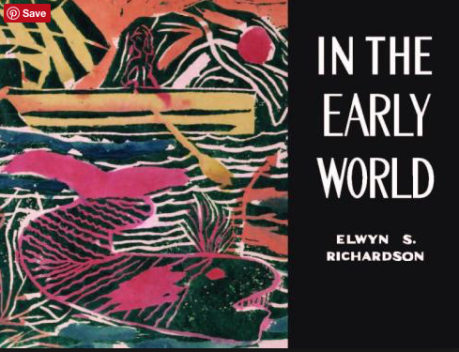Wednesday, June 13, 2018
Elwyn S. Richardson's In The Early World
Joseph Featherstone’s Schools Where Children Learn highlights the work of Elwyn Richardson in northern New Zealand. Featherstone suggests that In The Early World may be the best book about teaching ever written. Certainly it’s one of the most beautifully designed. Reproductions of children’s art of an astonishing quality fill its pages – wood and linoleum cuts, pottery, and fabrics, as well as writing.
Featherstone reflects that it takes time for the reader to understand that a long account of how the class took up pottery is meant to be emblematic of a whole style of teaching. Clay of various grades lay in deposits near the school, and Richardson and the children tested samples to see which kinds were good to work with. They built a small brick kiln and pottery became the standard activity in the school.
Messing around, the children slowly learned the limits of the material – you couldn’t build wet clay too high or it would collapse.
Pottery grew into writing deeply influenced by the natural world surrounding the school.
The pine tree stands
With cracked sooted arms
With stumped branches
Rotted into the ground
With cracked sooted arms
With stumped branches
Rotted into the ground
Richardson’s testimony on the work: I saw that I had to teach as much as I could when opportunities arose, and that this was a better kind of teaching than I had known when I was following through topic after topic. If I did not teach at such times, the work became poor and lifeless….The series of developments taught me too, that I must use environment to the full and encourage individual expression rather than class. This meant more individual and small group observation.
Elwyn S. Richardson, In The Early World, Pantheon Books @ 1964.

https://youtu.be/7v2IeWIr2A8
Subscribe to:
Posts (Atom)